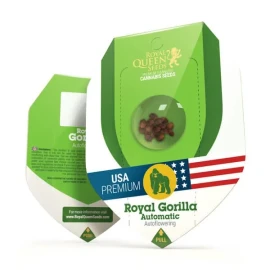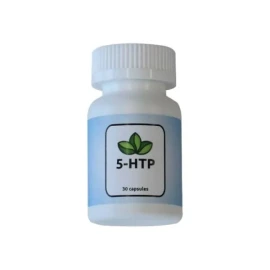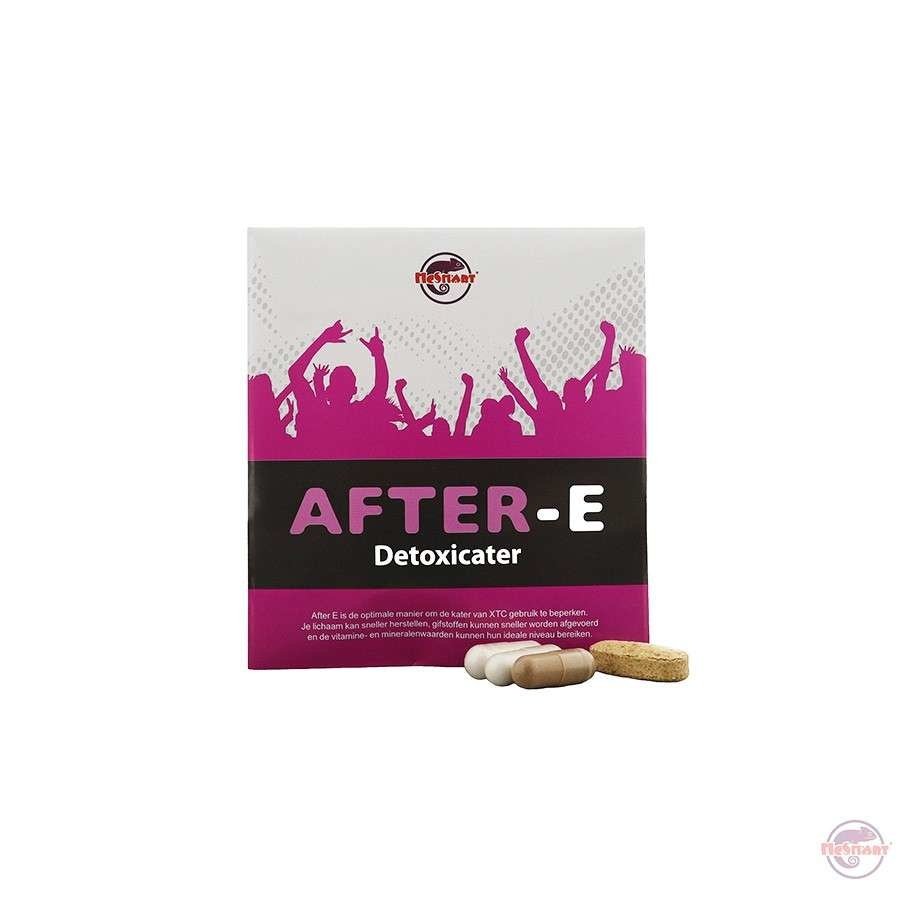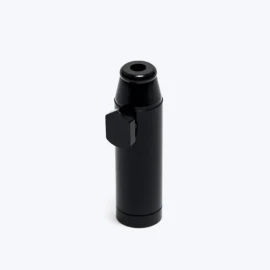Amnesia Haze Automatic
10,00 €
Quick Product Snapshot
| Strain Type | Autoflowering (sativa-dominant Haze × Ruderalis) |
| Seed-to-Harvest | 80–85 days |
| Height | 60–120 cm (compact to mid-range) |
| THC Content | 15–21% (CBD: 0–0.5%) |
| Indoor Yield | 300–600 g/m² |
| Outdoor Yield | 100–200 g per plant |
| Flavor Profile | Citrus, spicy, fruity, earthy with lemon top notes |
| Best For | Classic Amnesia effects in compact, beginner-friendly autoflower |
Introduction — Why Growers Pick Amnesia Haze Automatic
Amnesia Haze Automatic delivers the legendary cerebral euphoria and uplifting sativa effects of classic Amnesia genetics in a fast-finishing, compact autoflowering package. This strain combines the reliability of Ruderalis autoflowering traits with the potent, energetic high that made Amnesia Haze a cannabis hall-of-fame cultivar. Perfect for growers seeking consistent results without the complexity of photoperiod lighting schedules.
Key advantages include reliable 80–85 day cycles, sativa-leaning effects ideal for daytime use, manageable plant height for stealth or small-space growing, and impressive yield potential for an autoflower. The strain offers an excellent balance of beginner accessibility and experienced grower satisfaction.
At-a-Glance Specifications
- Genetics: Sativa-dominant Haze × Ruderalis
- Flowering Time: 80–85 days from seed
- THC Range: 15–21%
- Plant Height: 60–120 cm
- Yield Potential: 300–600 g/m² indoor, 100–200 g/plant outdoor
- Primary Terpenes: Limonene, caryophyllene, myrcene
Origins & Genetics
The Haze lineage traces back to the Netherlands in the 1990s, where Dutch breeders perfected the genetics that would become the foundation for countless sativa-dominant hybrids. Amnesia Haze Automatic represents the marriage of these celebrated Haze/Amnesia genetics with hardy Ruderalis genetics to create a strain that flowers automatically regardless of light cycles.
The Ruderalis contribution brings several crucial traits: automatic flowering triggered by plant age rather than light schedules, shorter stature suitable for discrete cultivation, accelerated life cycles completing in 11–13 weeks, and increased resilience to environmental stress. This genetic foundation makes the strain particularly valuable for novice growers and those with space constraints.
Different breeders have selected for varying characteristics within this genetic framework. Some focus on maximizing THC content, others prioritize yield potential, and some emphasize compact phenotypes for stealth growing. This breeding diversity explains the range of specifications seen across different seed banks.
What Makes Amnesia Haze Auto Unique
Speed and Reliability: The 80–85 day seed-to-harvest timeline represents optimal autoflower efficiency. Unlike photoperiod varieties requiring 16+ weeks, this strain delivers mature, potent flowers in under three months with no lighting schedule management required.
Exceptional Yield Potential: Indoor yields ranging from 300–600 g/m² place this strain among the higher-producing autoflowers available. Outdoor plants typically produce 100–200 g each under optimal conditions, with exceptional specimens reaching 300+ g.
Classic Sativa Effects: The cerebral, energetic high provides mental stimulation perfect for creative work, social activities, and daytime medication. Users report uplifting euphoria without the sedation common in indica-dominant strains.
Complex Flavor Development: The terpene profile features bright citrus and lemon top notes from limonene, spicy undertones from caryophyllene, and earthy or fruity base notes that develop complexity during proper curing. This flavor evolution continues for 4–8 weeks post-harvest.
Versatile Growing Requirements: While beginner-friendly in lifecycle management, the strain responds exceptionally well to advanced techniques. Novice growers appreciate the automated flowering, while experienced cultivators can optimize yields through environmental control and training methods.
Breeder Comparison
Understanding breeder variations helps select genetics matching specific growing goals and environments. Each breeder emphasizes different traits through selective breeding programs.
Herbies Seeds: THC approximately 17%, indoor yields up to 450 g/m², outdoor production reaching 350 g/plant. Plants typically reach 60–100 cm height with 77–88 day flowering periods. Known for consistent sweet and spicy flavor profiles.
Royal Queen Seeds: THC levels reaching 18%, indoor yields between 340–400 g/m², outdoor plants producing 113–170 g each. Compact 60–90 cm plants finishing in 11–12 weeks. Emphasizes citrus and earthy flavor development.
Blimburn Seeds: THC range 10–19%, indoor yields 300–400 g/m², outdoor claims up to 500 g per plant. Features taller phenotypes reaching 150 cm with distinctive fruity and spicy terpene profiles.
ILGM: THC approximately 19%, indoor yields reaching 455 g/m². Selected for pronounced citrus and lemon flavor characteristics with reliable germination rates.
Sweet Seeds: THC range 15–20%, indoor yields 400–600 g/m² in XL phenotypes, outdoor production 50–200 g per plant. Offers both standard and XL varieties with 8–9 week flowering windows.
Hypno Seeds: THC levels reaching 21%, indoor estimates 1.3–2 oz/ft², outdoor yields 60–210 g per plant. Selected for large phenotypes and maximum potency development.
Note: Breeder specifications represent optimal conditions and may vary based on growing environment, techniques, and phenotype expression.
Complete Grow Guide — From Seed to Harvest
Germination & Seedling Stage (Weeks 0–2)
Week 0–1 (Germination): Use paper towel method or rapid rooter plugs maintained at 20–25°C. Keep consistently moist but not waterlogged. Successful germination typically occurs within 24–72 hours. Plant sprouted seeds in small containers (0.5–1L) if planning transplant, or directly into final containers to avoid transplant shock.
Week 1–2 (Seedling Development): Provide 18–24 hour lighting with low-intensity LED or fluorescent fixtures. Begin with plain water or extremely diluted nutrients (EC 0.2–0.4). Watch for first true leaves and establish root development. Maintain temperatures 20–25°C with humidity 60–70%.
Vegetative Growth (Weeks 2–4)
Week 2–3: Increase pot size to 3–7L if transplanting. Begin gentle nutrients at 25% recommended strength, monitoring for any signs of burning. Initiate low-stress training (LST) by gently bending main stem. Avoid topping or high-stress techniques that can stunt autoflower development.
Week 3–4: Gradually increase nutrient strength to 40–50% of recommendations. Continue LST to create even canopy and expose lower bud sites. Monitor for early flowering signs as plants transition from vegetative to reproductive growth.
Transition & Stretch Phase (Weeks 4–7)
Week 4–5: Plants enter rapid growth phase with significant height increase. Continue LST and provide structural support for main cola. Increase feeding to 60–75% strength as plants demand more nutrients during stretch.
Week 5–7: First pistils appear indicating flower initiation. Maintain training but reduce manipulation as plants become more delicate. Focus on even light distribution and optimal environmental conditions for flower development.
Mid to Late Flowering (Weeks 7–11)
Week 7–9: Buds begin substantial development. Transition to bloom-focused nutrients higher in phosphorus and potassium. Reduce nitrogen to prevent nutrient burn and encourage proper flower maturation. Monitor humidity levels to prevent mold issues.
Week 9–11: Flowers reach peak development with trichome production intensifying. Watch for nutrient deficiencies as plants mobilize stored nutrients. Begin flush protocol if desired, typically 7–14 days before anticipated harvest.
Ripening & Harvest (Weeks 11–13)
Week 11+: Monitor trichomes daily using magnification. Harvest when trichomes appear mostly cloudy with 10–30% amber coloration for balanced effects. Earlier harvest (mostly cloudy) provides more energetic effects, while later harvest (more amber) increases relaxation.
Light Schedules and Recommendations
18/6 Schedule: Eighteen hours light, six hours darkness provides excellent balance of growth vigor and electricity efficiency. Most popular choice for autoflowers.
20/4 Schedule: Twenty hours light, four hours darkness maximizes growth potential with modest increase in energy costs. Ideal for winter growing or maximum yield goals.
24/0 Schedule: Continuous lighting acceptable but increases heat management requirements and electricity costs without proportional yield benefits.
Container Size Guidelines
Small Tent/Balcony Growing: 3–7L containers suitable for 1–2 plants in limited space situations. Expect 50–150g yields per plant with proper technique.
Medium Indoor Setups: 7–15L containers optimize yield potential for most indoor environments. Target 4 plants per square meter for maximum production.
Large Indoor/Outdoor: 15–20L+ containers allow full genetic expression. Single plants can achieve 200–400g yields under optimal conditions.
Training and Pruning Techniques
Low-Stress Training (LST): Primary recommended technique involving gentle bending and securing of branches to create even canopy. Begin early in vegetative stage and continue through early flower.
Defoliation: Light removal of fan leaves blocking bud sites acceptable but avoid aggressive defoliation that can stress autoflowers. Focus on improving light penetration rather than dramatic plant restructuring.
High-Stress Techniques: Avoid topping, fimming, or aggressive pruning. Autoflowers have limited recovery time and stress can significantly reduce final yields.
Nutrient Management
Sensitivity Considerations: Autoflowers typically require 25–50% of nutrients recommended for photoperiod plants. Begin with quarter-strength solutions and gradually increase based on plant response.
Vegetative Feeding: Focus on balanced N-P-K ratios (20-20-20 or similar) at EC 0.6–1.0. Monitor leaf color and growth rate to adjust feeding strength.
Flowering Nutrition: Transition to bloom nutrients (5-15-20 ratios) around week 4–5. Increase phosphorus and potassium while reducing nitrogen. Target EC 0.8–1.4 depending on plant size and growing medium.
Common Deficiency Signs: Yellowing lower leaves during late flower indicates normal nutrient mobilization. Rapid yellowing or brown spots suggest pH issues or nutrient lockout requiring immediate attention.
Growing Medium and pH Management
Soil Growing: Use high-quality organic potting mix amended with 20–30% perlite for drainage. Maintain pH between 6.0–6.8 for optimal nutrient uptake.
Soilless Media: Coco coir or peat-based mixes allow precise nutrient control. Maintain pH 5.6–6.2 and provide more frequent, lighter feedings.
Hydroponic Systems: Advanced technique suitable for experienced growers seeking maximum yields. Requires precise EC/pH monitoring and environmental control.
Climate and Environmental Control
Temperature Management: Maintain 20–26°C during light hours, 16–20°C during dark periods. Avoid temperature swings exceeding 10°C between day and night cycles.
Humidity Control: Seedling stage 60–70% RH, vegetative 50–60% RH, flowering 40–50% RH, late flower 35–45% RH to prevent mold and mildew.
Air Circulation: Strong airflow prevents mold, strengthens stems, and improves gas exchange. Use oscillating fans and adequate exhaust systems to maintain fresh air exchange.
Scenario-Based Growing Plans
Small Indoor Tent (60×60×140cm)
Setup: Single plant in 7L container with 150–300W LED fixture. Implement 18/6 lighting schedule with basic LST techniques.
Expected Yield: 60–200g depending on experience level and environmental control.
Key Considerations: Maximize vertical space with LST, ensure adequate ventilation, consider carbon filtration for odor control.
Timeline: 80–85 days seed to harvest with minimal maintenance requirements.
Medium Tent Setup (100×100cm)
Configuration: Four plants in 7–10L containers with 400–600W LED lighting. Employ LST and light SCROG techniques for canopy management.
Yield Expectations: 300–500g total harvest (75–125g per plant average).
Management Strategy: Stagger planting by 1–2 weeks for continuous harvest potential. Focus on even light distribution and airflow management.
Balcony/Container Outdoor Growing
Container Selection: 10–20L pots positioned for maximum sunlight exposure (6+ hours direct sun minimum).
Seasonal Timing: Start seeds March–June in Northern Hemisphere for summer/early autumn harvest.
Weather Protection: Provide rain protection during late flowering to prevent bud rot. Consider mobile containers for weather avoidance.
Yield Potential: 100–300g per plant in optimal outdoor conditions.
Guerrilla/Stealth Micro Growing
Discretion Focus: Use 5–7L containers with compact training to maintain low profile. Select bushy phenotypes over tall, stretchy plants.
Location Requirements: Choose sites with morning sun, wind protection, and minimal human traffic. Ensure legal compliance with local regulations.
Minimal Intervention: Use slow-release organic nutrients to reduce visit frequency. Select hardy genetics tolerating environmental stress.
Security Measures: Camouflage containers, avoid regular visiting patterns, document GPS coordinates for harvest timing.
Troubleshooting Common Problems
Nutrient Burn
Symptoms: Brown, crispy leaf tips progressing inward. “Clawing” or downward curved leaves with dark green coloration.
Diagnosis: Excessive nutrient concentration (high EC) or pH imbalance preventing proper uptake.
Solution: Flush growing medium with pH-balanced water. Reduce nutrient strength to 50% previous level and gradually increase based on plant response.
Nutrient Deficiency
Symptoms: Yellowing leaves starting from bottom of plant. Slow growth, pale coloration, or purple leaf stems.
Diagnosis: Insufficient feeding, pH lockout, or specific nutrient deficiency (commonly nitrogen, phosphorus, or magnesium).
Solution: Check and adjust pH to proper range. Increase nutrient strength gradually. Consider foliar feeding for rapid correction.
Stretchy Growth
Symptoms: Excessive space between nodes, thin stems, reaching toward light source.
Diagnosis: Insufficient light intensity or poor light spectrum for growth stage.
Solution: Increase light intensity, move fixtures closer, implement LST earlier to manage height. Consider supplemental lighting for dark areas.
Hermaphrodite Development
Symptoms: Male pollen sacs appearing on female plants, banana-shaped stamens protruding from buds.
Diagnosis: Genetic predisposition or environmental stress (light leaks, temperature extremes, nutrient stress).
Solution: Remove affected plant parts immediately. Identify and eliminate stress sources. Monitor closely for additional hermaphrodite sites.
Powdery Mildew and Bud Rot
Symptoms: White powdery coating on leaves (PM) or brown, mushy bud material with fuzzy growth (bud rot).
Diagnosis: High humidity combined with poor air circulation, particularly in late flowering stage.
Solution: Immediately reduce humidity below 45%, increase air circulation, remove affected plant material. Consider preventive treatments for future grows.
Pest Management
Common Pests: Spider mites (fine webbing, stippled leaves), thrips (silver streaks on leaves), aphids (small green/black insects), fungus gnats (small flying insects around soil).
Integrated Approach: Use sticky traps for monitoring, introduce beneficial insects, apply organic treatments (neem oil, insecticidal soap), maintain clean growing environment.
Prevention: Quarantine new plants, inspect regularly, maintain proper environmental conditions to stress plants minimally.
Harvesting and Curing for Optimal Quality
Determining Harvest Timing
Trichome Analysis: Use 60x+ magnification to examine trichome color. Clear trichomes indicate immaturity, cloudy represents peak THC, amber shows THC degradation to CBN.
Optimal Harvest Window: 70–90% cloudy trichomes with 10–30% amber provides balanced effects. Earlier harvest emphasizes energetic effects, later harvest increases relaxation.
Secondary Indicators: Pistil color change from white to brown/orange, overall plant yellowing as nutrients mobilize to flowers.
Harvest Methodology
Wet vs. Dry Trimming: Wet trimming (immediately after harvest) allows precise trim but requires immediate processing. Dry trimming (after initial drying) preserves terpenes but complicates trimming process.
Cutting Technique: Use sharp, clean scissors. Remove large fan leaves first, then carefully trim sugar leaves close to bud structure without damaging trichomes.
Drying Process
Environmental Control: Maintain 15–21°C temperature with 45–55% humidity. Provide gentle air circulation without direct airflow on buds.
Duration: 7–14 days depending on bud density and environmental conditions. Stems should snap rather than bend when properly dried.
Common Mistakes: Drying too quickly (harsh smoke), insufficient air circulation (mold risk), excessive light exposure (terpene degradation).
Curing for Maximum Potency and Flavor
Initial Curing: Place dried buds in airtight glass jars filled 75% capacity. Include humidity packs maintaining 62% RH if desired.
Burping Schedule: Open jars daily for 15–30 minutes during first two weeks, then weekly thereafter. Monitor for ammonia smell indicating excessive moisture.
Flavor Development: Citrus and spicy terpenes mellow and deepen during 4–8 week cure. Harsh chlorophyll taste dissipates, revealing complex flavor profiles.
Long-term Storage: Properly cured cannabis maintains quality for 12+ months when stored in cool, dark, airtight conditions.
Effects, Terpenes, and Usage Notes
Expected Effect Profile
Cerebral Euphoria: Primary effects include uplifting mental stimulation, enhanced creativity, and social energy typical of quality sativa genetics.
Duration: Effects typically last 2–4 hours with gradual onset and smooth conclusion. Peak effects occur 15–45 minutes after consumption.
Optimal Use Times: Daytime and early evening consumption recommended. Effects support creative work, social activities, and active pursuits.
Tolerance Considerations: Regular users may require increased amounts for consistent effects. Rotation with other strains helps maintain sensitivity.
Terpene Profile and Flavor Development
Limonene: Provides citrus and lemon top notes while potentially offering mood elevation and stress relief properties.
Caryophyllene: Contributes spicy, peppery undertones and may provide anti-inflammatory effects through CB2 receptor interaction.
Myrcene: Adds earthy, musky base notes while potentially enhancing THC absorption and providing relaxation balance.
Pinene: May contribute pine or fresh herb notes while potentially improving focus and memory retention.
Medical Applications
Mood Enhancement: Users report significant mood elevation and stress reduction suitable for managing daily anxiety and depression symptoms.
Pain Management: Moderate analgesic effects may help with mild to moderate pain, particularly inflammatory conditions.
Creative Applications: Enhanced focus and creativity support artistic endeavors, problem-solving, and social engagement.
Limitations: Low CBD content (0–0.5%) limits specific therapeutic applications requiring cannabidiol presence.
Yield Expectations and Real-World Results
Indoor Growing Results
Optimal Conditions: Experienced growers with controlled environments, optimal lighting, and large containers achieve 400–600 g/m² yields consistently.
Typical Results: Average indoor cultivators using standard equipment and techniques produce 250–400 g/m² reliably.
Beginner Expectations: New growers should target 150–300 g/m² while learning techniques and environmental control.
Variables Affecting Yield: Light quality and intensity, container size, nutrient management, training techniques, environmental control precision.
Outdoor Growing Performance
Optimal Outdoor: Full sun exposure, large containers (15L+), optimal nutrients, and weather protection enable 200–400g per plant yields.
Average Outdoor: Standard balcony or garden growing typically produces 100–200g per plant with basic care and 10L+ containers.
Challenging Conditions: Small containers, limited sun, or stress factors may reduce yields to 50–150g per plant.
Measurement Standardization
Weight Specifications: All yield figures represent dry weight after proper curing. Wet weight typically 3–4x higher than final dry weight.
Area vs. Plant Measurements: Indoor yields measured per square meter (g/m²) for consistent comparison. Outdoor yields measured per individual plant (g/plant).
Realistic Expectations: Breeder claims represent maximum potential under ideal conditions. Real-world results typically 60–80% of maximum claims.
Cost Analysis and Value Calculation
Growing Cost Components
Initial Investment: Seeds, containers, growing medium, nutrients, lighting equipment, ventilation systems, pH/EC meters.
Ongoing Expenses: Electricity, water, nutrients, replacement materials, equipment maintenance.
Per-Gram Calculations: Total growing costs divided by final dry yield provides cost-per-gram metric for value assessment.
Sample Cost Analysis
Small Tent Setup: Initial investment $300–800, ongoing costs $50–150 per grow, typical yield 100–300g, resulting cost $2–8 per gram.
Medium Indoor Setup: Initial investment $800–2000, ongoing costs $100–300 per grow, typical yield 300–600g, resulting cost $1–5 per gram.
Outdoor Container: Initial investment $100–300, ongoing costs $30–100 per grow, typical yield 200–400g, resulting cost $0.50–2 per gram.
Return on Investment
Payback Period: Most setups achieve cost recovery within 2–4 harvest cycles depending on local market prices and consumption rates.
Quality Considerations: Home-grown cannabis often exceeds commercial quality through optimal curing and strain selection, providing additional value beyond cost savings.
User Reports and Community Feedback
Typical User Experiences
Beginner Success Stories: New growers consistently report successful harvests using basic techniques and environmental control. Common yields range 1–3 ounces per plant in small setups.
Experienced Grower Results: Advanced cultivators achieve 4–8 ounces per plant through optimization of lighting, nutrients, and training techniques.
Failure Analysis: Most unsuccessful grows result from overfeeding, inadequate lighting, or environmental stress rather than genetic issues.
Effect Consistency Reports
Daytime Use: Users consistently report energetic, creative effects suitable for work and social activities.
Medical Feedback: Patients note effectiveness for mood enhancement, mild pain relief, and stress management applications.
Tolerance Development: Regular users report stable effects with minimal tolerance buildup compared to sedating indica varieties.
Flavor and Aroma Feedback
Fresh Harvest: Initial citrus and spicy notes dominate with earthy undertones developing during cure.
Curing Evolution: 4–8 week cure develops complex flavor layers with smoother smoke and enhanced terpene expression.
Consumption Methods: Vaporization best preserves terpene profiles, while combustion emphasizes spicy and earthy notes.
Frequently Asked Questions
Can you top Amnesia Haze Auto?
Topping is not recommended for autoflowering varieties. The limited vegetative period provides insufficient recovery time, potentially reducing final yields significantly. Use low-stress training (LST) techniques instead for canopy management.
What’s the best light schedule for autoflowers?
18/6 or 20/4 schedules provide optimal balance of growth and energy efficiency. 24/0 continuous lighting is acceptable but offers minimal yield benefits while increasing electricity costs and heat management requirements.
How much will one auto plant yield?
Yields vary dramatically based on container size, lighting, nutrients, and growing techniques. Expect 50–150g for small containers and basic techniques, 100–300g for medium setups with good technique, and 200–400g+ for large containers with advanced techniques.
When should I flush and harvest?
Flushing 7–14 days before harvest helps remove excess nutrients for smoother smoke, though not strictly necessary. Harvest when trichomes appear 70–90% cloudy with some amber coloration for balanced effects.
Are these seeds feminized?
Most commercial Amnesia Haze Automatic seeds are feminized, producing only female plants. Confirm feminization status with specific breeders, as some offer regular (non-feminized) versions.
Is this strain beginner-friendly?
Yes for lifecycle management – autoflowing eliminates lighting schedule complexity. However, nutrient sensitivity requires careful feeding practices. Start with quarter-strength nutrients and increase gradually based on plant response.
Essential Tips for Success
Pre-Grow Checklist
- Test and calibrate pH/EC meters before use
- Prepare quality growing medium with proper drainage
- Establish environmental controls (temperature, humidity, airflow)
- Plan nutrient schedule starting at reduced strength
- Select appropriate container sizes for available space
- Ensure adequate lighting for plant count and area
Weekly Monitoring Tasks
- Document plant height, leaf color, and overall health
- Check and adjust pH levels in nutrient solutions
- Monitor environmental conditions (temperature, humidity)
- Inspect for pest activity or disease symptoms
- Adjust training techniques based on plant development
- Photograph progress for learning and documentation
Common Mistakes to Avoid
- Overfeeding young plants with full-strength nutrients
- Attempting high-stress training techniques on autoflowers
- Insufficient lighting intensity for plant count
- Poor air circulation leading to mold/mildew issues
- Harvesting too early based on breeder timelines alone
- Inadequate environmental control during flowering
Success Optimization Strategies
- Start with proven genetics from reputable breeders
- Document all variables for future grow improvement
- Join growing communities for advice and troubleshooting
- Invest in quality environmental monitoring equipment
- Focus on consistency rather than maximum yields initially
- Plan harvest timing based on trichome examination
This comprehensive guide provides the foundation for successful Amnesia Haze Automatic cultivation, from seed selection through final curing. Success depends on consistent environmental control, appropriate feeding practices, and careful attention to plant signals throughout the growing cycle.
Related Products
Frequently Asked Questions
Everything You Need to Know














